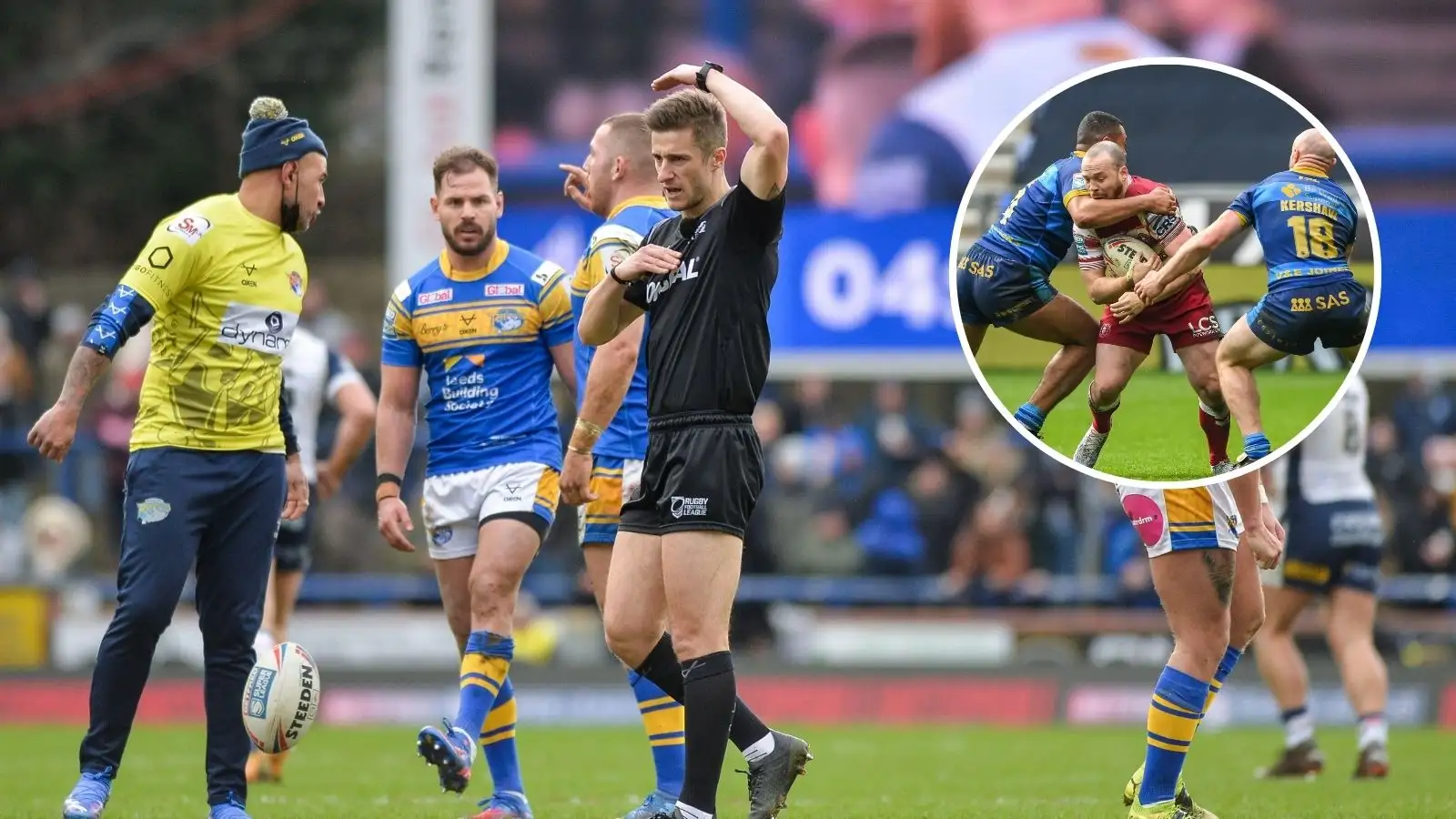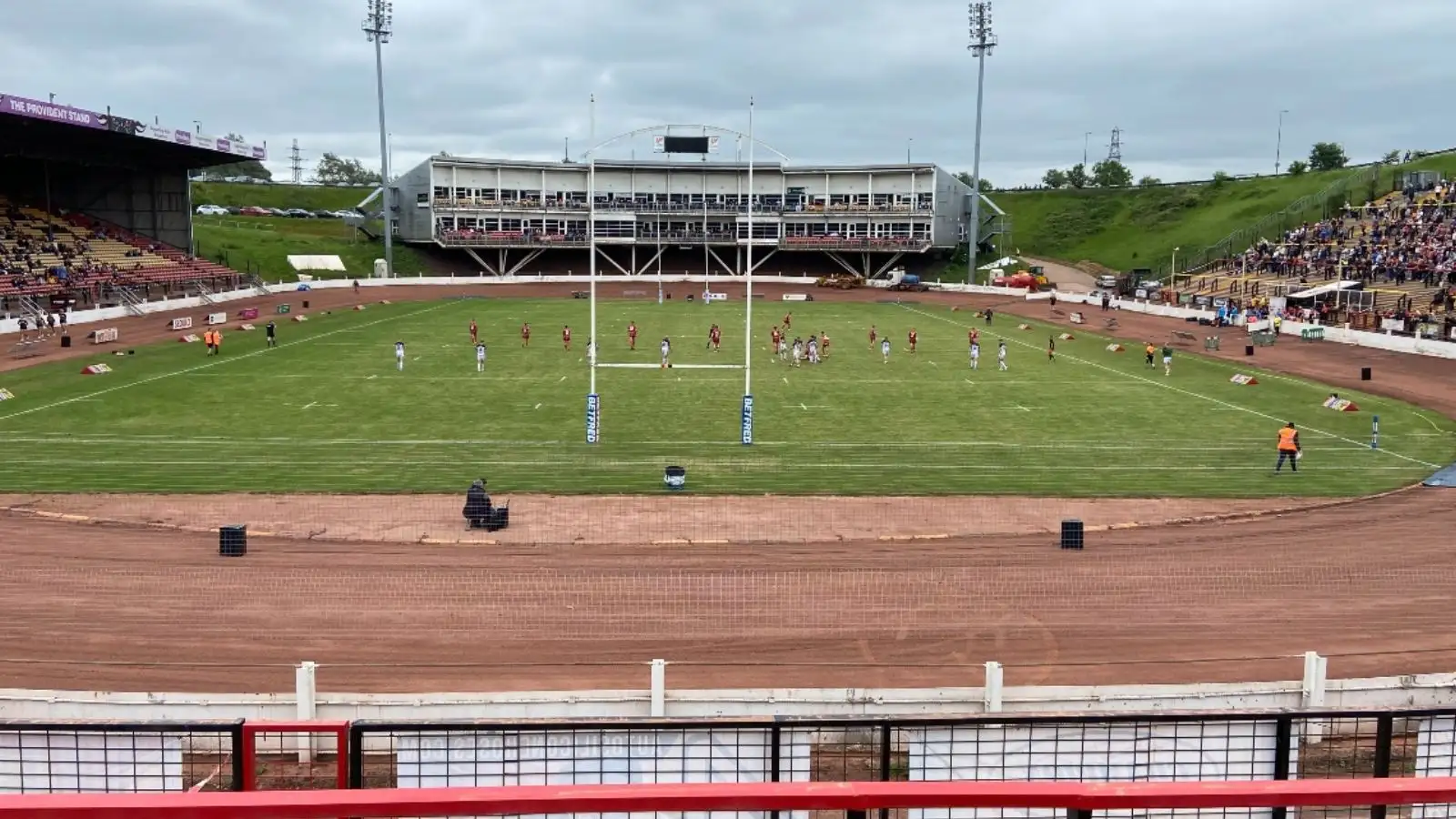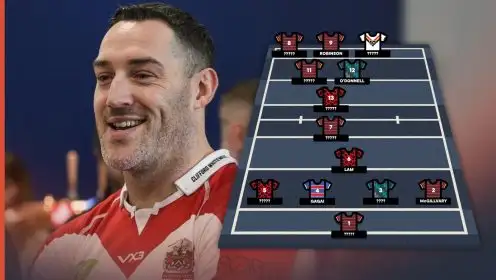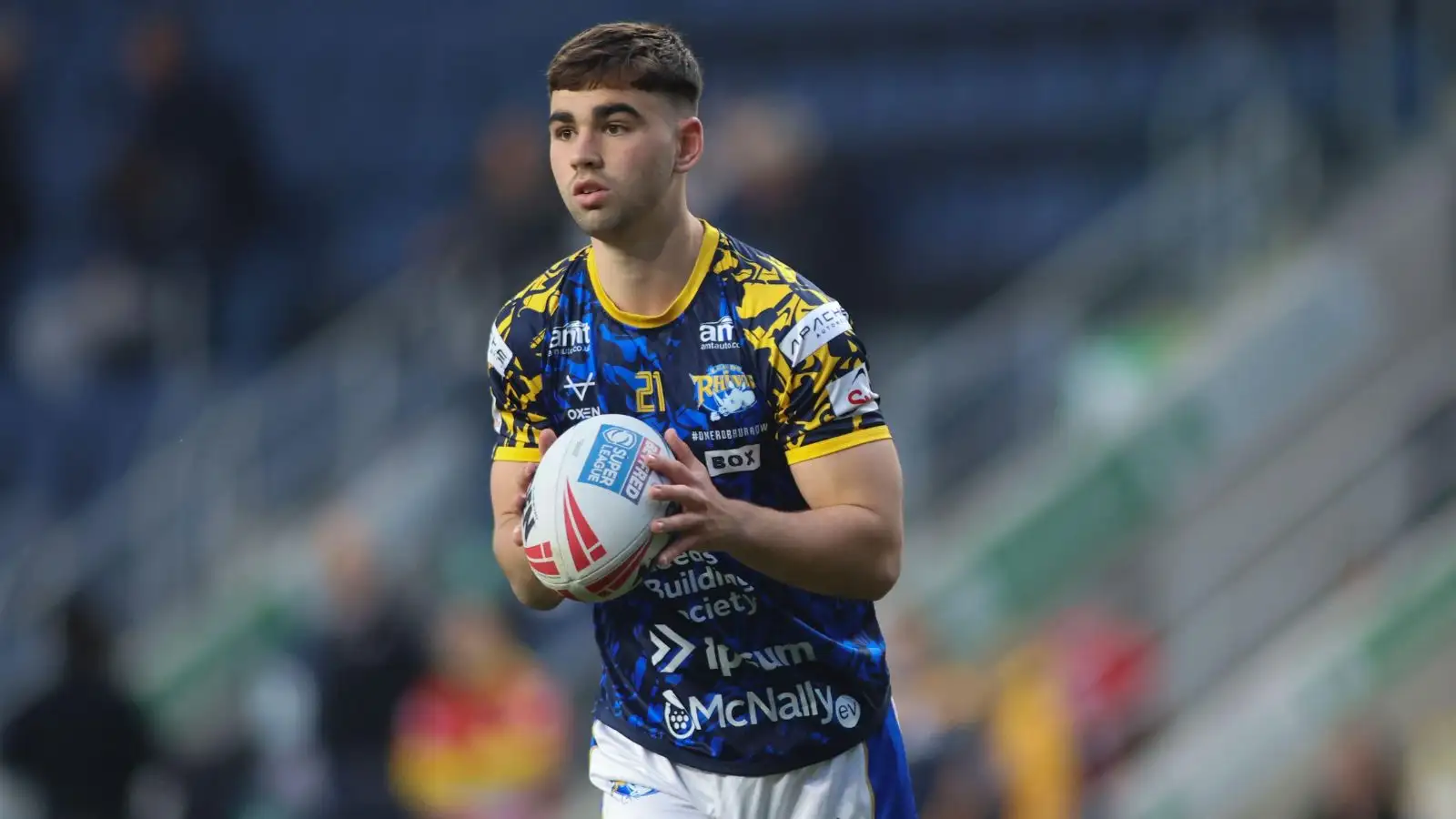RFL confirm plans for major law changes including controversial lowering of legal tackle height

Referee Chris Kendall signals a high tackle (main image); Wigan Warriors' Liam Marshall is hit with a high shot by Wakefield Trinity's Reece Lyne (circle) - Alamy
Professional rugby league in Britain will lower the legal tackle height to below the armpit from 2025 as part of a sweeping number of recommendations approved by the Rugby Football League designed to make the sport safer for players and reduce the risk of concussion.
The sport’s Brain Health and Clinical Advisory Group have recommended 44 law changes, many of which will come in as early as next year and impact all levels of the sport, from junior to professional and the community game. But of the 44, it is the confirmation that the legal tackle height will be lowered that will cause the biggest stir.
A much-publicised and heavily controversial trial earlier this summer saw four rounds of academy fixtures revert to a system where only contact below the armpit was deemed legal.
Currently, it is contact below the neck which is deemed legal – but that will change for the community game in 2024, before the changes are rolled out to the professional arena the following year.
The changes impact age grade rugby league at professional level from next year too, which means academy and reserve grade will also change to below the armpit for legal tackle height.
Any contact above the armpit will be penalised, with stricter sanctions for contact with the head to be introduced from 2024 at all levels.
The professional game will then adopt the changes for 2025 after the trial in academy rugby earlier this summer showed a significant reduction in the amount of head contact.
RFL confirm plans for major law changes including controversial lowering of legal tackle height
The opening night of the trial, a game between Leeds Rhinos and Bradford Bulls, saw 57 penalties awarded – and while the number of penalties awarded remained high throughout the 24-game trial, the number of penalties awarded for direct head contact went down significantly, leading to further confidence in the recommendations being made.
However, that is far from the only significant change introduced following the recommendations. An attempt to reduce player load – essentially the amount of collisions they are put through – is also being introduced via a variety of metrics: including a mandatory four-week off-season for every player, as well as a further two weeks of non-contact training at the start of pre-season.
At community level, no rugby league will be played in the month of December unless played as part of an existing winter offering, with no contact rugby league activity taking place from the third weekend in November until the following January, when a graduated return to play will be in place.
Professional players will also now be subject to a cap on the number of minutes they play in any given 12-month period. Starting from next year, any forward over the age of 22 cannot play more than 2,000 minutes in a 12-month period: the equivalent of 25 full matches. Backs will be given a limit of 2,400 minutes: 30 full games.
For players 22 or younger, those limits will be 20 and 25 respectively, while those under 18 will be capped at 15 and 20 full games’ worth of minutes.
The mandatory introduction of instrumented mouthguards, which help collect the data that has been central to rugby league’s plans to lower the risk of concussion in the game in recent years, will also be rolled out in the men’s and women’s Super League competitions.
First used in 2021, they allow detailed studies of head acceleration exposures, which have shaped a number of research projects and laws trials, leading to the latest recommendations.
RFL Chief discusses impending law changes, describes them as ‘essential’
The RFL chief executive, Tony Sutton, who sits on the Brain Health Committee, admitted the law changes will pose a challenge for all stakeholders, but insisted they were ‘essential’ alterations for the game.
He said: “Rugby league will remain a tough, gladiatorial and character-building team sport. But we believe the reduction in the legal tackle height at all levels from 2025 will place a new emphasis on skill and attacking play, further increasing the appeal of rugby league both to parents, and to open-age community players.
“In stressing the significance of these recommendations, which have now been ratified by the RFL‘s independent board of directors, we acknowledge the challenges they will pose for those at all levels of the sport.
“We believe they are essential, as rugby league must respond to developments in medical and scientific knowledge to prioritise the safety of those that play, and also that they offer exciting opportunities to increase the appeal and accessibility of rugby league, especially at junior and community levels.”



